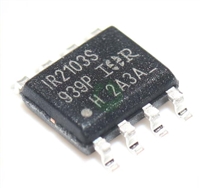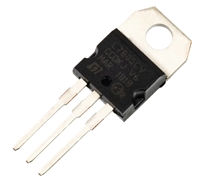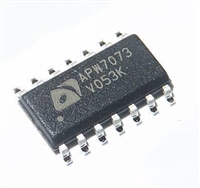PSoC® 5LP: CY8C56LP Family
Datasheet
For more details on the peripherals see the “Example
Peripherals” section on page 35 of this datasheet. For
information on UDBs, DSI, and other digital blocks, see the
“Digital Subsystem” section on page 34 of this datasheet.
Transimpedance amplifiers
Programmable gain amplifiers
Mixers
Other similar analog components
PSoC’s analog subsystem is the second half of its unique
configurability. All analog performance is based on a highly
accurate absolute voltage reference with less than 0.1% error
over temperature and voltage. The configurable analog
subsystem includes:
See the “Analog Subsystem” section on page 46 of this
datasheet for more details.
PSoC’s CPU subsystem is built around a 32-bit three-stage
pipelined ARM Cortex-M3 processor running at up to 67 MHz.
The Cortex-M3 includes a tightly integrated nested vectored
interrupt controller (NVIC) and various debug and trace modules.
The overall CPU subsystem includes a DMA controller, flash
cache, and RAM. The NVIC provides low latency, nested
interrupts, and tail-chaining of interrupts and other features to
increase the efficiency of interrupt handling. The DMA controller
enables peripherals to exchange data without CPU involvement.
This allows the CPU to run slower (saving power) or use those
CPU cycles to improve the performance of firmware algorithms.
The flash cache also reduces system power consumption by
allowing less frequent flash access.
Analog muxes
Comparators
Analog mixers
Voltage references
ADCs
DACs
DFB
PSoC’s nonvolatile subsystem consists of flash, byte-writeable
EEPROM, and nonvolatile configuration options. It provides up
to 256 KB of on-chip flash. The CPU can reprogram individual
blocks of flash, enabling boot loaders. You can enable an ECC
for high reliability applications. A powerful and flexible protection
model secures the user's sensitive information, allowing
selective memory block locking for read and write protection.
Two KB of byte-writable EEPROM is available on-chip to store
application data. Additionally, selected configuration options
such as boot speed and pin drive mode are stored in nonvolatile
memory. This allows settings to activate immediately after power
on reset (POR).
All GPIO pins can route analog signals into and out of the device
using the internal analog bus. This allows the device to interface
up to 62 discrete analog signals.
Some CY8C56LP devices offer a fast, accurate, configurable
delta-sigma ADC with these features:
Less than 100 µV offset
A gain error of 0.2 percent
INL less than ±1 LSB
DNL less than ±1 LSB
SINAD better than 66 dB
The three types of PSoC I/O are extremely flexible. All I/Os have
many drive modes that are set at POR. PSoC also provides up
to four I/O voltage domains through the VDDIO pins. Every GPIO
has analog I/O, LCD drive, CapSense, flexible interrupt
generation, slew rate control, and digital I/O capability. The SIOs
on PSoC allow VOH to be set independently of VDDIO when used
as outputs. When SIOs are in input mode they are high
impedance. This is true even when the device is not powered or
when the pin voltage goes above the supply voltage. This makes
the SIO ideally suited for use on an I2C bus where the PSoC may
not be powered when other devices on the bus are. The SIO pins
also have high current sink capability for applications such as
LED drives. The programmable input threshold feature of the
SIO can be used to make the SIO function as a general purpose
analog comparator. For devices with FS USB the USB physical
interface is also provided (USBIO). When not using USB these
pins may also be used for limited digital functionality and device
programming. All the features of the PSoC I/Os are covered in
detail in the “I/O System and Routing” section on page 28 of this
datasheet.
The CY8C56LP family also offers one or two successive
approximation register (SAR) ADCs, depending on device
selected. Featuring 12-bit conversions at up to 1 M samples per
second, they also offer low nonlinearity and offset errors and
SNR better than 70 dB. They are well suited for a variety of
higher speed analog applications.
The output of either ADC can optionally feed the programmable
DFB via DMA without CPU intervention. You can configure the
DFB to perform IIR and FIR digital filters and several user
defined custom functions. The DFB can implement filters with up
to 64 taps. It can perform a 48-bit multiply-accumulate (MAC)
operation in one clock cycle.
Four high speed voltage or current DACs support 8-bit output
signals at an update rate of up to 8 Msps. They can be routed
out of any GPIO pin. You can create higher resolution voltage
PWM DAC outputs using the UDB array. This can be used to
create a pulse width modulated (PWM) DAC of up to 10 bits, at
up to 48 kHz. The digital DACs in each UDB support PWM, PRS,
or delta-sigma algorithms with programmable widths.
The PSoC device incorporates flexible internal clock generators,
designed for high stability and factory trimmed for high accuracy.
The Internal Main Oscillator (IMO) is the master clock base for
the system, and has 1% accuracy at 3 MHz. The IMO can be
configured to run from 3 MHz up to 62 MHz. Multiple clock
derivatives can be generated from the main clock frequency to
meet application needs. The device provides a PLL to generate
system clock frequencies up to 67 MHz from the IMO, external
crystal, or external reference clock. It also contains a separate,
In addition to the ADCs, DACs, and DFB, the analog subsystem
provides multiple:
Comparators
Uncommitted opamps
Configurable switched capacitor/continuous time (SC/CT)
blocks. These support:
Document Number: 001-84935 Rev. *C
Page 4 of 120














 深入解读IR2103资料手册:引脚说明、电气参数及替换型号推荐
深入解读IR2103资料手册:引脚说明、电气参数及替换型号推荐

 L7805CV手册解读:引脚说明、替代型号推荐、好坏检测
L7805CV手册解读:引脚说明、替代型号推荐、好坏检测

 MMBT5551资料手册解读:电气参数、替换型号推荐
MMBT5551资料手册解读:电气参数、替换型号推荐

 APW7073资料手册解读:产品特性、引脚说明、替换型号推荐
APW7073资料手册解读:产品特性、引脚说明、替换型号推荐
